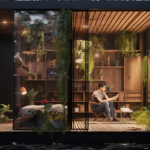Beginners Guides
Girl Model With Sister Who Has Tiny House

In a society that frequently values minimalism, I am captivated by the distinct lifestyles of two siblings. One sister is a thriving model, effortlessly adorning magazine covers and strutting down catwalks. Meanwhile, her sibling has opted for an alternative lifestyle, residing in a compact home that defies conventional expectations regarding living space and material wealth.
These two worlds collide, creating a fascinating juxtaposition of fashion and minimalism. As I delve into their stories, I am drawn to the concept of minimalism in fashion and the rise of tiny houses as a lifestyle choice. Through their unique journeys, they redefine success in the fashion industry and inspire others to embrace a simpler way of life.
Join me as we explore the power of collaboration between fashion and home design, and unravel the future of these two seemingly unrelated worlds. Let’s dive into this captivating tale of two sisters, each carving their own path towards fulfillment and self-discovery.
Key Takeaways
- Contrasting lives of two sisters: one a successful model, the other living in a tiny house
- Fashion and minimalism collide in their stories
- Tiny houses gaining popularity as an alternative to traditional housing
- Collaboration between fashion and architecture promotes sustainable living
Exploring Minimalism in Fashion
Let’s dive into the world of minimalism in fashion and discover how it can transform your wardrobe! Minimalism isn’t just about owning fewer clothes, but also about adopting a mindset that values quality over quantity.
By embracing minimalism in everyday life, you can simplify your wardrobe and create a more streamlined and functional collection of clothing. This can have a positive impact on your mental well-being, as studies have shown that clutter and excess can contribute to feelings of stress and overwhelm.
By curating a minimalist wardrobe, you can reduce decision fatigue, increase your confidence, and save time and money.
Now, let’s transition to the subsequent section about the rise of tiny houses and how they’re changing the way we live.
The Rise of Tiny Houses
Explore the growing popularity of compact dwellings, and evaluate whether the trend of tiny houses is truly on the rise. Tiny houses have gained significant attention in recent years, as more people are embracing minimalistic lifestyles and seeking alternatives to traditional housing. These small, efficient homes offer a range of benefits, including lower costs, reduced environmental impact, and the opportunity to live a simpler, clutter-free life. To better understand the rise of tiny houses, let’s examine their key features in comparison to fashion minimalism:
| Tiny Houses | Fashion Minimalism |
|---|---|
| Small size and efficient design | Capsule wardrobes and timeless pieces |
| Emphasis on sustainability and eco-friendliness | Preference for sustainable and ethically produced clothing |
| Focus on functionality and multi-purpose use | Prioritization of versatile and practical clothing |
As the demand for smaller, more sustainable living options continues to grow, the popularity of tiny houses is expected to rise. Transitioning seamlessly into the next section about ‘sisters in different worlds,’ we can see how these two trends intersect in the lives of our main characters.
Sisters in Different Worlds
In discussing the subtopic of Sisters in Different Worlds, we will explore the contrasting careers of fashion and architecture that my sister and I have pursued.
While she’s found success in the fashion industry, I’ve chosen a path in architecture. Despite our differing paths, we’ve found common ground in our shared love for minimalism. This love has inspired both of our creative journeys.
Through our unique careers, we’ve been able to inspire and support each other in our respective fields. We’re constantly pushing each other to reach new heights.
Contrasting Careers in Fashion and Architecture
Imagine yourself in the world of fashion, where glamorous runways and high-end designers reign supreme, while your sister is in the world of architecture, creating innovative and sustainable tiny homes that redefine the concept of living – two contrasting careers that ignite passion and provoke thought.
In architecture, minimalism is a key trend, focusing on simplicity, clean lines, and functional spaces. Similarly, in the fashion industry, sustainable fashion trends are gaining popularity, emphasizing minimalism in design and production processes.
Both fields share a common goal of promoting sustainable practices and reducing waste. While fashion and architecture may seem worlds apart, they find common ground in minimalism, seeking to create spaces and designs that are environmentally friendly and visually appealing.
This shared value of minimalism bridges the gap between the two industries, fostering collaboration and inspiring innovative approaches to design.
Finding Common Ground in Minimalism
Embrace the simplicity and clean lines of minimalism, and discover the common ground between fashion and architecture.
Minimalism in home decor has gained popularity for its ability to create a calm and clutter-free environment. By simplifying our living spaces, we can experience numerous benefits. Firstly, minimalism promotes a sense of tranquility and mindfulness by reducing visual distractions.
Secondly, it allows us to focus on what truly matters, fostering a sense of clarity and peace. Additionally, minimalism encourages sustainability and conscious consumption, as it promotes the use of natural and eco-friendly materials.
Fashion and architecture can both draw inspiration from these principles, as they emphasize clean lines, functionality, and timeless design. By embracing minimalism, we can find a shared appreciation for simplicity and inspire each other’s creative journeys, exploring new possibilities for self-expression.
Inspiring Each Other’s Creative Journeys
Discover the endless possibilities of creativity by inspiring each other’s journeys in fashion and architecture. When a girl model with a passion for fashion collaborates with her sister who has a tiny house, they create a unique synergy that explores artistic expression in both fields. They support each other’s dreams by sharing ideas, materials, and techniques, allowing their respective passions to flourish.
Fashion meets architecture: By combining their expertise, they blur the lines between these two artistic realms, creating innovative designs that challenge traditional boundaries.
Sustainable fashion and tiny house living: They both prioritize sustainability, using eco-friendly materials and practices in their work. Their collaboration encourages others to consider the environmental impact of their choices.
Cross-pollination of ideas: By sharing their experiences and knowledge, they push each other to think outside the box and find new ways to express their creativity.
By exploring artistic expression and supporting each other’s dreams, they redefine success in the fashion industry by breaking away from conventional norms and embracing a more holistic approach.
Redefining Success in the Fashion Industry
Redefining success in the fashion industry means breaking free from conventional norms and embracing diversity and authenticity. In a world that’s long perpetuated unattainable beauty standards, the fashion industry is slowly shifting towards a more inclusive and sustainable approach.
Sustainable fashion, which focuses on reducing the environmental impact of clothing production, is gaining traction as more designers and consumers recognize the need for change. Moreover, redefining beauty standards is also becoming a prominent movement within the industry. Models of different sizes, ages, and ethnicities are being celebrated for their uniqueness and individuality. This shift not only promotes body positivity but also allows for a wider representation of people in the fashion world.
By embracing these changes, the fashion industry is not only redefining success but also inspiring others to do the same. Transitioning into the next section about "the power of collaboration," it’s evident that these shifts in the fashion industry are not happening in isolation but rather through collective efforts and creative partnerships.
The Power of Collaboration
Combining fashion and architecture in creative projects allows for the exploration of innovative and boundary-breaking ideas. By merging the disciplines of fashion and architecture, new possibilities arise that can inspire fresh perspectives and approaches.
Collaborating with experts from both fields can leverage each other’s expertise, leading to innovative solutions that push the boundaries of what’s considered possible in the fashion industry.
Combining Fashion and Architecture in Creative Projects
When it comes to blending fashion and architecture, creative projects offer endless opportunities for collaboration and innovation.
Exploring architectural fashion collaborations allows designers to combine their unique perspectives and expertise to create stunning and functional pieces.
Fashion has a significant influence on tiny house design, as it brings elements of style, functionality, and sustainability to these compact living spaces.
Incorporating fashion into the design of tiny houses allows for the creation of aesthetically pleasing and personalized spaces that reflect the individual’s sense of style.
By integrating fashion and architecture, designers can break boundaries and inspire new ideas that push the limits of creativity.
This collaboration between fashion and architecture opens up a world of possibilities, encouraging designers to think outside the box and create innovative designs that redefine the way we live and interact with our living spaces.
Breaking Boundaries and Inspiring New Ideas
Combining fashion with architecture has always been a captivating endeavor, pushing the boundaries of creativity and inspiring new ideas. However, there is a growing movement that takes this fusion to a whole new level, exploring unconventional fashion while promoting sustainable living.
This movement has given rise to unique collaborations, one of which involves a girl model and her sister, who happens to be a tiny house enthusiast. By incorporating sustainable materials and innovative design techniques, these sisters are breaking the mold and showcasing how fashion and architecture can seamlessly intertwine.
Their projects not only challenge traditional notions of beauty and style but also emphasize the importance of sustainable practices in every aspect of our lives. As we delve into their story, we will discover how they leverage each other’s expertise for innovative solutions, creating a harmonious blend of fashion and architecture that goes beyond aesthetics.
Leveraging Each Other’s Expertise for Innovative Solutions
By leveraging each other’s expertise, you can discover innovative solutions that seamlessly blend fashion and architecture, creating a unique and sustainable lifestyle.
Did you know that sustainable fashion is projected to reach a market value of $9.81 billion globally by 2025?
The collaboration between fashion and architecture is an exciting opportunity to find common ground in creativity. Fashion designers can incorporate architectural elements into their designs, while architects can draw inspiration from fashion to create functional and aesthetically pleasing structures.
This collaboration can result in innovative solutions that not only merge the two disciplines but also promote sustainability and minimalism. Embracing minimalism in both fashion and architecture can lead to a more sustainable lifestyle, reducing waste and encouraging conscious consumption.
By inspiring others to embrace minimalism, we can create a world where fashion and architecture work together to create beautiful and sustainable spaces.
Inspiring Others to Embrace Minimalism
Embrace minimalism and let your surroundings be a reflection of your inner peace – it’s a powerful way to inspire others!
Minimalist home decor is all about simplicity, functionality, and decluttering. By removing unnecessary items and focusing on a few key pieces, you create a calm and serene environment. The benefits of a minimalist lifestyle go beyond just aesthetics. It can reduce stress, increase productivity, and improve overall well-being.
Incorporate these simple steps to embrace minimalism:
- Start by decluttering your space and getting rid of items you no longer need or love.
- Choose a neutral color palette and incorporate natural materials like wood and plants.
- Invest in quality pieces that serve multiple purposes to maximize functionality.
By adopting a minimalist mindset, you can inspire others to do the same and create a sense of peace and harmony in their own lives.
As we move into the future of fashion and home design, minimalism will continue to be a guiding principle, promoting simplicity and sustainability.
The Future of Fashion and Home Design
In exploring the future of fashion and home design, we can discover new possibilities for sustainable fashion that prioritize ethical practices and materials.
Embracing minimalism as a solution for overconsumption allows us to shift our focus towards quality over quantity, encouraging a more conscious approach to our choices.
By creating a more balanced and conscious lifestyle, we can not only reduce our impact on the environment but also find fulfillment in simplicity and purposeful living.
Exploring New Possibilities for Sustainable Fashion
Imagine the endless opportunities for sustainable fashion as you witness the girl model and her sister living in a tiny house.
Sustainable fashion practices and ethical fashion movements are gaining traction in response to the negative environmental impact of the fashion industry. By embracing sustainable fashion, we can reduce waste, promote fair labor practices, and minimize our carbon footprint. This includes using eco-friendly materials, such as organic cotton or recycled fabrics, and implementing responsible manufacturing processes.
The girl model and her sister exemplify this movement by living in a tiny house, which not only reduces their ecological footprint but also encourages a minimalist lifestyle. By embracing minimalism as a solution for overconsumption, we can shift our focus from material possessions to experiences and prioritize quality over quantity.
This shift will lead us towards a more sustainable and conscious future.
Embracing Minimalism as a Solution for Overconsumption
Picture yourself living in a compact and eco-friendly space, where you prioritize experiences over possessions, and find contentment in the simplicity of a minimalist lifestyle. Exploring alternative lifestyles is becoming increasingly popular as people recognize the negative impact of consumerism on our environment and well-being. Embracing minimalism can be a solution for overconsumption, as it encourages us to question our buying habits and make more intentional choices. By focusing on what truly brings us joy and eliminating excess, we not only reduce waste but also free up time and resources for more meaningful experiences. Minimalism is about living with less, but it doesn’t mean sacrificing comfort or style. It’s about creating a more balanced and conscious lifestyle, where we appreciate the things we have and make mindful decisions about what we bring into our lives. Transitioning into the subsequent section, let’s explore how we can achieve this balance.
Creating a More Balanced and Conscious Lifestyle
Get ready to transform your lifestyle and discover the joy of living a more balanced and conscious life. Integrating mindfulness into daily routines is a powerful way to cultivate a more sustainable approach to fashion.
By being present and fully aware of our choices, we can make more conscious decisions about what we consume. This means considering the environmental impact of our clothing choices, opting for sustainable materials, and supporting ethical brands.
It also means embracing minimalism in our wardrobes, focusing on quality over quantity, and learning to love and appreciate the pieces we already own. By adopting these practices, we can reduce our contribution to overconsumption and create a more harmonious relationship with both our clothing and the planet.
Frequently Asked Questions
What are some common challenges that models face in the fashion industry?
Common challenges that models face in the fashion industry are vast. From the constant pressure to maintain a certain physique to the never-ending scrutiny of their appearance, it’s no wonder mental health issues are prevalent.
The industry’s obsession with perfection can be a breeding ground for self-doubt and anxiety. Models often face intense competition, long working hours, and the challenge of balancing personal and professional lives. These factors can take a toll on their mental well-being, making it crucial to prioritize their mental health.
How do tiny houses contribute to sustainable living?
Tiny houses contribute to sustainable living by providing several benefits of downsizing and promoting an eco-friendly lifestyle. Firstly, they require fewer resources to build and maintain, reducing the environmental impact.
Additionally, tiny houses often utilize renewable energy sources, such as solar panels, further decreasing reliance on non-renewable energy.
The compact size encourages a minimalist lifestyle, reducing consumption and waste.
Overall, living in a tiny house promotes sustainability by minimizing the ecological footprint and encouraging mindful choices.
What are some key differences between the fashion industry and the tiny house movement?
Fashion vs Tiny House: A Comparison of Industries reveals fascinating differences between these two sectors.
The fashion industry, driven by constantly changing trends, influences consumer behavior on a large scale. On the other hand, the tiny house movement emphasizes sustainability and minimalism, influencing individuals to live more consciously.
While fashion encourages consumption and often leads to waste, tiny houses promote eco-friendly living and reduce environmental impact.
These industries have contrasting effects on consumer behavior, with fashion being driven by trends and tiny houses promoting sustainable choices.
How can collaboration between fashion designers and home designers create innovative solutions?
Collaborative designs between fashion and home designers can lead to innovative solutions by bringing together their expertise in different areas.
Fashion designers can contribute their knowledge of materials, textures, and aesthetics to create stylish and functional interiors.
On the other hand, home designers can offer their expertise in space optimization and practicality, ensuring that the designs meet the needs of the inhabitants.
This fashion and interior synergy can result in unique and creative solutions that combine style and functionality.
What are some ways in which the fashion industry can adapt to embrace minimalism and sustainability?
Minimalist fashion trends and sustainable fashion practices are key ways in which the fashion industry can adapt to embrace minimalism and sustainability.
Minimalist fashion trends involve clean lines, neutral colors, and a focus on essential pieces. This encourages consumers to buy fewer but higher-quality items, reducing waste.
Sustainable fashion practices include using eco-friendly materials, implementing ethical production processes, and promoting recycling and upcycling.
By embracing these concepts, the fashion industry can contribute to a more sustainable and environmentally friendly future.
Conclusion
In conclusion, the story of the girl model and her sister with a tiny house serves as an allegory for the changing landscape of fashion and home design. It highlights the shift towards minimalism and the reevaluation of traditional notions of success.
Through collaboration and inspiration, these sisters are paving the way for a future where less is more. As we embrace minimalism in both our closets and our homes, we can create a more sustainable and fulfilling lifestyle.
The future of fashion and home design is bright, and it starts with embracing the power of simplicity.
Hi, I’m Emma. I’m the Editor in Chief of Tiny House 43, a blog all about tiny houses. While tree houses are often associated with childhood, they can be the perfect adult retreat. They offer a cozy space to relax and unwind, surrounded by nature. And since they’re typically built on stilts or raised platforms, they offer stunning views that traditional homes simply can’t match. If you’re looking for a unique and romantic getaway, a tree house tiny house might just be the perfect option.
Beginners Guides
How Do I Get Rid of Tiny Flies in My House
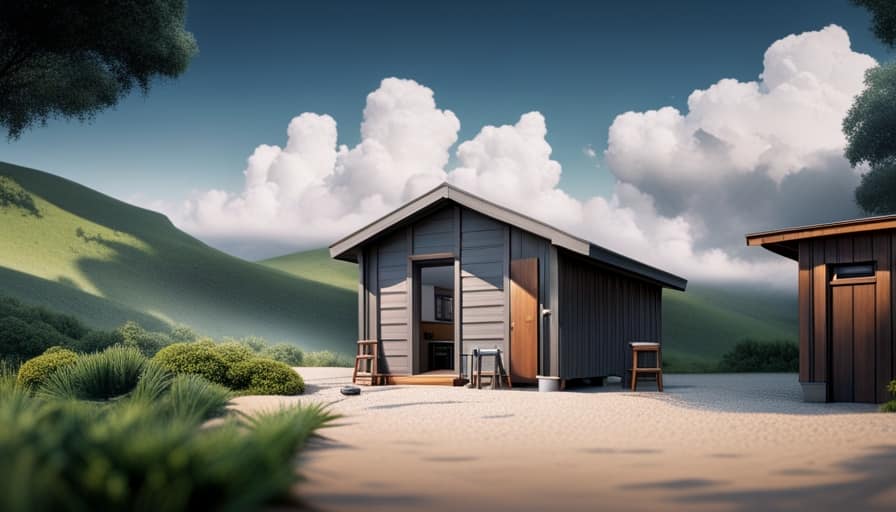
Recently, I have been bothered by these annoying little flies in my home, and I must say, they are really starting to get on my nerves!
But fear not, because I’ve done my research and I’m here to share some expert tips on how to get rid of those tiny flies once and for all.
From identifying the different types of flies to using natural remedies and chemical solutions, I’ve got you covered.
So let’s dive in and bid farewell to these unwanted guests together!
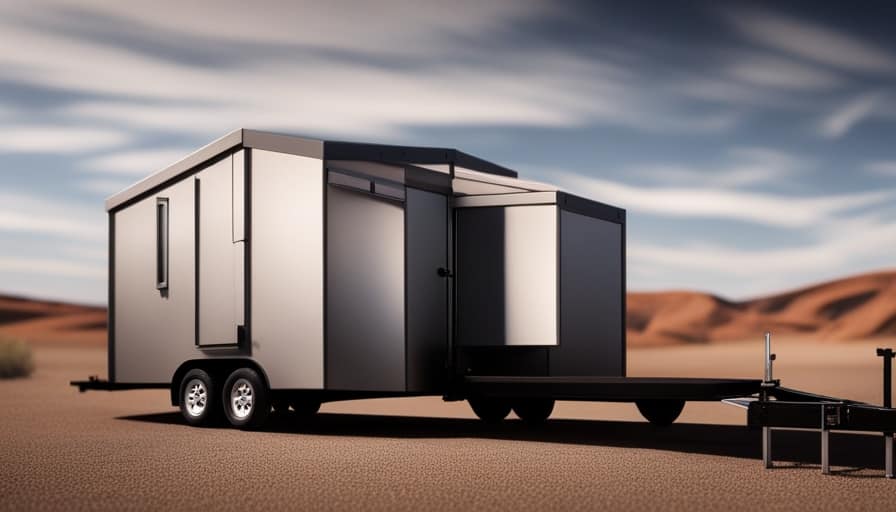
Key Takeaways
- Identifying the common types of tiny flies in your house is important for effective pest control.
- Tiny flies are attracted to moist and decaying organic matter, such as overripe fruits and rotting vegetables.
- Natural remedies, such as vinegar and dish soap solutions, can be used to eliminate tiny flies from your house.
- Preventing future infestations of tiny flies involves maintaining a clean environment, sealing cracks or openings, and storing perishable items properly.
Identifying the Common Types of Tiny Flies in Your House
I can easily identify the common types of tiny flies in my house by observing their physical characteristics and behavior. Flies are attracted to our homes for various reasons, including the presence of food, moisture, and waste. It’s important to note that these flies can pose health risks, as they can carry and spread disease-causing organisms.
To identify the types of flies, I first look at their size and color. For instance, fruit flies are small and have a tan or brown color. Drain flies, on the other hand, are gray or black and have a fuzzy appearance.
Understanding the Reasons Why Tiny Flies Infest Your Home
To understand why tiny flies infest your home, it’s important to consider their attraction to certain conditions and factors within your living space.
These flies, commonly known as fruit flies or drain flies, are attracted to moist and decaying organic matter. They seek out common breeding grounds such as overripe fruits, rotting vegetables, and damp areas in your kitchen or bathroom.

These tiny flies are also drawn to standing water in sinks, drains, and garbage disposals. Signs of a fly infestation include the presence of numerous flies hovering around these areas, as well as the sighting of their larvae or pupae.
It’s crucial to address these conditions and remove any potential breeding grounds to effectively eliminate the infestation and prevent future occurrences.
Natural Remedies to Eliminate Tiny Flies From Your House
One effective way to eliminate tiny flies from your house is by using a combination of vinegar and dish soap. This homemade vinegar fly spray is a non-toxic and practical solution to get rid of those pesky insects.
Here’s how you can make it:

- Mix equal parts of vinegar and water in a spray bottle.
- Add a few drops of dish soap to the mixture. The soap helps to break the surface tension of the liquid, making it easier for the flies to drown.
- Shake the bottle gently to ensure the ingredients are well combined.
- Spray the solution directly onto the flies or in areas where they’re commonly found, such as near windows or fruit bowls.
This natural fly spray isn’t only effective but also safe for your family and pets. It traps and kills the flies without the use of harmful chemicals.
Give it a try and say goodbye to those tiny flies in your house!
Using Chemical Solutions to Get Rid of Tiny Flies in Your Home
Bleach is a strong and effective chemical solution that can help eliminate tiny flies in your home. Chemical solutions, such as bleach, can be highly effective in eliminating tiny flies. The strong properties of bleach make it a powerful tool for killing flies and destroying their breeding grounds. However, it’s important to use caution when using chemical solutions, as they can be harmful to humans and pets if not used properly.
When comparing chemical solutions to natural remedies for getting rid of tiny flies in your house, it’s important to consider their effectiveness.
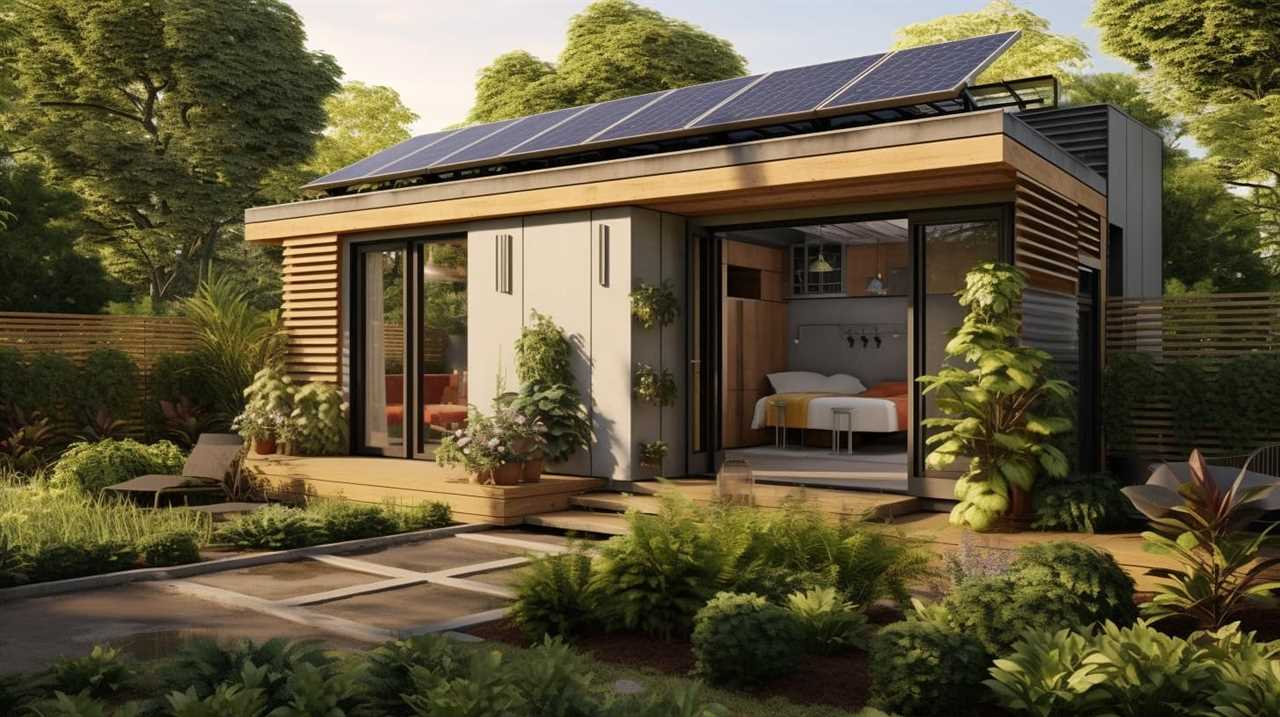
In the next section, we’ll discuss methods for preventing future infestations of tiny flies in your house.
Preventing Future Infestations of Tiny Flies in Your House
I can take steps to prevent future infestations of tiny flies in my house by implementing proper sanitation practices. By maintaining a clean environment, I can greatly reduce the chances of reinfestation. Here are three key practices to incorporate:
-
Regularly clean and sanitize all areas of the house, especially the kitchen and garbage disposal areas. Empty and clean trash cans frequently to prevent any organic matter from attracting flies.
-
Seal any cracks or openings in doors, windows, and screens to prevent flies from entering the house. Repair any damaged screens to ensure they’re intact and functioning properly.
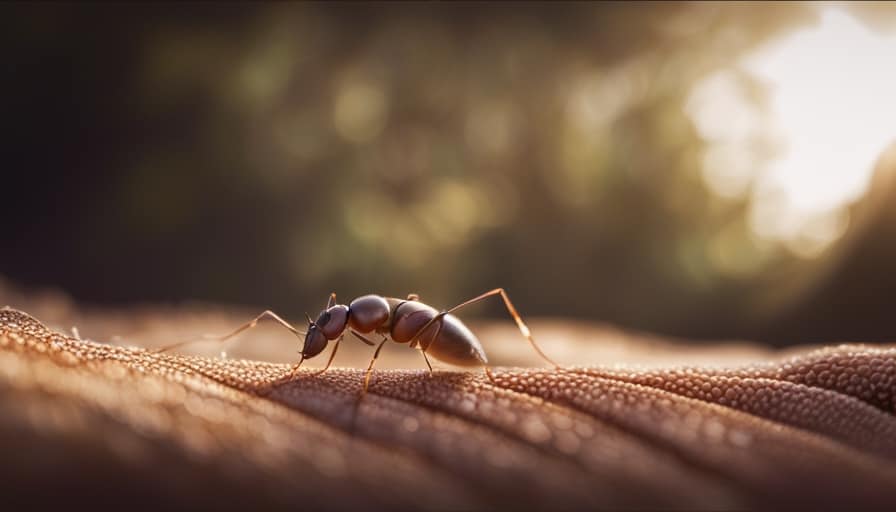
-
Store fruits, vegetables, and other perishable items in sealed containers or in the refrigerator. Flies are attracted to the odors of decaying food, so keeping it properly stored will deter them.
Frequently Asked Questions
How Do Tiny Flies Affect My Health?
Tiny flies can pose health risks, as they can carry bacteria and pathogens that can cause illnesses. To avoid health issues, it’s important to keep your house clean, dispose of trash properly, and eliminate any standing water where they can breed.
Can Tiny Flies Damage My Property?
Tiny flies can indeed cause damage to your property. Their larvae can infest and feed on organic materials, such as wood, causing structural damage over time. It’s important to address the issue promptly to prevent further harm.
Are Tiny Flies Attracted to Specific Food Sources?
Tiny flies are often attracted to specific food sources, such as overripe fruits or decaying organic matter. Understanding their breeding habits and implementing effective prevention methods, like proper sanitation and sealing entry points, can help keep them out of the house.
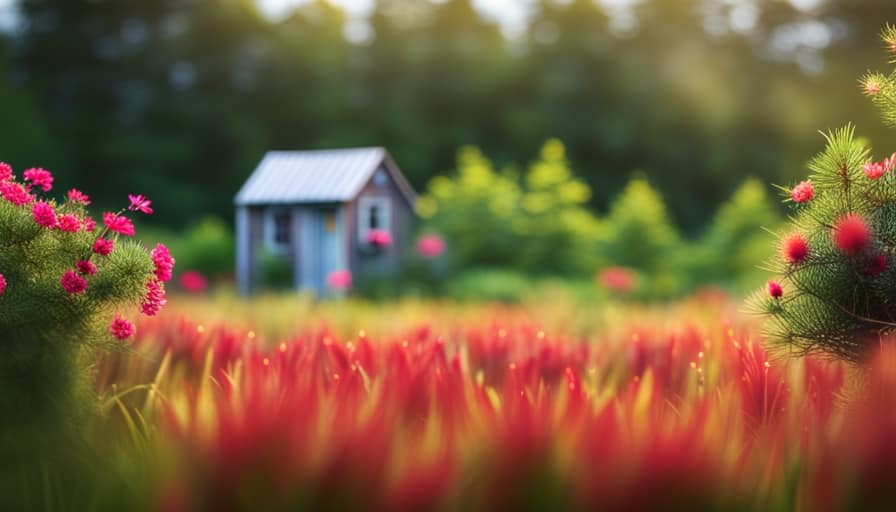
How Long Does It Take for Natural Remedies to Eliminate Tiny Flies?
In my experience, the speed of effectiveness of natural remedies versus chemical solutions for eliminating tiny flies can vary. While some natural remedies may work quickly, others may take longer to fully eliminate the flies. It’s important to be patient and consistent in your efforts.
Are There Any Long-Term Effects of Using Chemical Solutions to Get Rid of Tiny Flies?
Using chemical solutions to eliminate tiny flies in your house can have long-term environmental impacts. Consider using alternative methods like natural remedies or traps that are safer and more sustainable for the ecosystem.
Conclusion
In conclusion, it’s evident that tiny flies can be a nuisance in our homes. By understanding their types and reasons for infestation, we can effectively eliminate them using natural remedies or chemical solutions.
However, it’s crucial to prevent future infestations by maintaining cleanliness and proper waste management. Rest assured, with the right knowledge and approach, you can bid farewell to these pesky insects and enjoy a fly-free home environment.

I’m Theodore, and I love tiny houses. In fact, I’m the author of Tiny House 43, a book about tiny houses that are also tree houses. I think they’re magical places where imaginations can run wild and adventures are just waiting to happen.
While tree houses are often associated with childhood, they can be the perfect adult retreat. They offer a cozy space to relax and unwind, surrounded by nature. And since they’re typically built on stilts or raised platforms, they offer stunning views that traditional homes simply can’t match.
If you’re looking for a unique and romantic getaway, a tree house tiny house might just be the perfect option.
Beginners Guides
How Do I Get Rid of Tiny Ants in My House

- Health risks: Are there any potential diseases that can be transmitted by ants in the house?
- Prevention methods: What are some effective ways to keep ants out of the house to avoid any health risks?
I have been dealing with these stubborn small ants in my home, and I’m sure you can empathize. It seems like I am stuck in an endless game of hide-and-seek with these little creatures.
But fear not, because I’ve done my research and I’m here to share some tried and true methods to get rid of them for good. From natural remedies to chemical solutions, I’ve got you covered.
So let’s roll up our sleeves and say goodbye to those pesky ants together!
Key Takeaways
- Identifying the type of ants in your house is important in order to effectively address the infestation issue.
- Understanding the behavior and nesting habits of tiny ants is essential in finding and eliminating their colonies.
- Natural remedies such as vinegar and water solution, essential oils, and cinnamon can help repel and eliminate tiny ants.
- If natural remedies don’t work, consider using chemical solutions or seeking professional pest control services for a safer and more comprehensive approach.
Identifying the Type of Ants in Your House
I personally find it helpful to identify the type of ants in my house by observing their behavior and physical features. Distinguishing characteristics play a crucial role in determining the species of ants present.

Some common types of household ants include pavement ants, odorous house ants, and pharaoh ants. Pavement ants are dark brown or black with parallel grooves on their heads and thoraxes. Odorous house ants emit a distinct odor when crushed, often described as a rotten coconut smell. Pharaoh ants are light yellow to reddish-brown and have two distinct nodes on their petioles.
In terms of common habitats, ants can be found in various areas of the house, including kitchens, bathrooms, and around food sources. Understanding the behavior and nesting habits of tiny ants is essential in effectively addressing the infestation issue.
Understanding the Behavior and Nesting Habits of Tiny Ants
There are several key factors to consider when understanding the behavior and nesting habits of tiny ants in your house.
These tiny creatures are social insects, living in colonies that can range from a few dozen to thousands of individuals. They communicate and cooperate through chemical signals and pheromones, which helps them locate food sources and establish trails.

When it comes to nesting, tiny ants can build their colonies in various locations, such as in wall voids, under floors, or even in potted plants. Understanding their nesting habits is crucial in effectively eliminating them from your house.
It’s important to note that while ants can be a nuisance indoors, they play a vital role in the ecosystem, helping to decompose organic matter and control other insect populations. However, their presence in food storage areas can contaminate and spoil food, making it necessary to address their infestation promptly and safely.
Natural Remedies to Get Rid of Tiny Ants in Your House
One effective natural remedy to eliminate tiny ants in your house is using a vinegar and water solution. Vinegar, with its strong odor, disrupts their scent trails and confuses them, making it difficult for them to navigate. To create the solution, mix equal parts of white vinegar and water in a spray bottle. Then, simply spray the solution directly onto the ants or their entry points.
Another natural remedy is using essential oils, such as peppermint, lemon, or tea tree oil. These oils have strong scents that repel ants. Mix a few drops of your chosen essential oil with water and spray it in areas where ants are present.
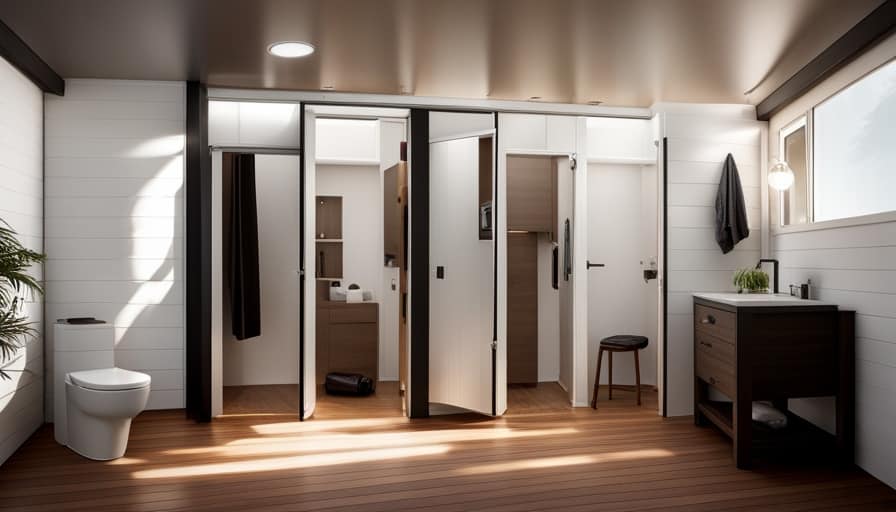
These natural remedies provide an eco-friendly and safe way to get rid of tiny ants in your house. However, if these methods don’t work, it may be necessary to consider chemical solutions for eliminating tiny ants.
Chemical Solutions for Eliminating Tiny Ants
If you’re dealing with a persistent infestation of tiny ants in your house, using insecticide sprays can be an effective solution to eliminate them. However, it is important to consider non-toxic alternatives and professional pest control services for a safer and more comprehensive approach.
| Chemical Solution | How it Works | Pros | Cons |
|---|---|---|---|
| Insecticide sprays | Kills ants on contact | – Easy to use – Widely available – Immediate results |
– Chemical exposure – Harmful to pets and children – Potential environmental impact |
While insecticide sprays can quickly kill ants, they may pose risks to your health and the environment. If you prefer non-toxic alternatives, consider using natural repellents like vinegar, lemon juice, or essential oils. These substances are less harmful and can help deter ants from entering your home.
Another option is to hire professional pest control services. They have the expertise and specialized equipment to effectively eliminate ant infestations. Professionals can also assess the extent of the problem and provide long-term solutions to prevent future infestations.

Preventing Future Infestations: Tips and Tricks
When I encountered a persistent infestation of tiny ants in my house, I took proactive steps to prevent future infestations. Here are some effective ant proofing techniques for your home and long-term strategies for keeping ants out:
-
Seal cracks and crevices: Inspect your house for any openings where ants can enter, such as gaps around doors, windows, and pipes. Use caulk or weatherstripping to seal these entry points.
-
Keep your house clean: Clean up food and drink spills promptly, and store food in airtight containers. Wipe down countertops and sweep floors regularly to remove any crumbs or residue that may attract ants.
-
Remove potential ant habitats: Trim back vegetation that’s in contact with your house, as ants can use it as a bridge to enter. Also, keep firewood and other outdoor items away from the foundation.
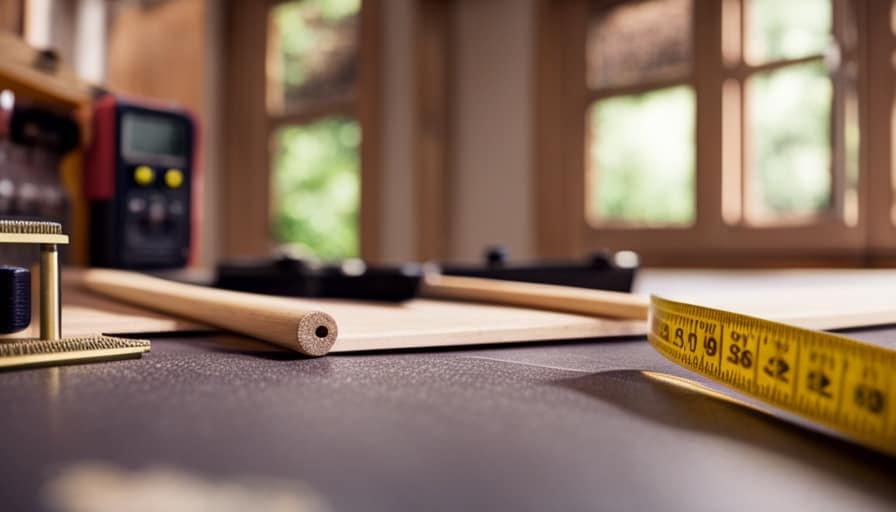
-
Use natural deterrents: Certain scents like peppermint, cinnamon, and vinegar can repel ants. Spray these substances around entry points or wipe down surfaces to discourage ants from entering.
Frequently Asked Questions
How Do I Get Rid of Ants in My Garden?
To get rid of ants in my garden, I use organic pest control methods and natural ant repellents. These methods are effective in keeping ants away and maintaining a healthy garden environment.
Can I Use Vinegar to Kill Ants?
Yes, vinegar can be used to kill ants. However, there are also other natural ant repellents that you can consider using as alternatives to vinegar.
What Should I Do if I Have a Severe Ant Infestation?
If I have a severe ant infestation, I would first focus on prevention tips such as sealing entry points and removing food sources. If the problem persists, I would consider professional ant extermination options for effective and long-lasting results.

Are There Any Health Risks Associated With Ants in the House?
There are potential health risks associated with ants in the house. They can contaminate food, spread bacteria, and even cause allergies. It’s important to take preventive measures to avoid these risks.
Can I Use Essential Oils to Repel Ants?
I find that using essential oils for ant control can be effective. However, it’s important to consider the pros and cons of natural ant repellents. While they are safe and eco-friendly, they may not be as potent as chemical options.
Conclusion
In conclusion, by identifying the type of ants in your house, understanding their behaviors and nesting habits, and implementing natural or chemical remedies, you can effectively get rid of tiny ants.
However, prevention is key to avoiding future infestations. Just as a fortress protects its kingdom from invaders, taking proactive measures will safeguard your home from these pesky pests.
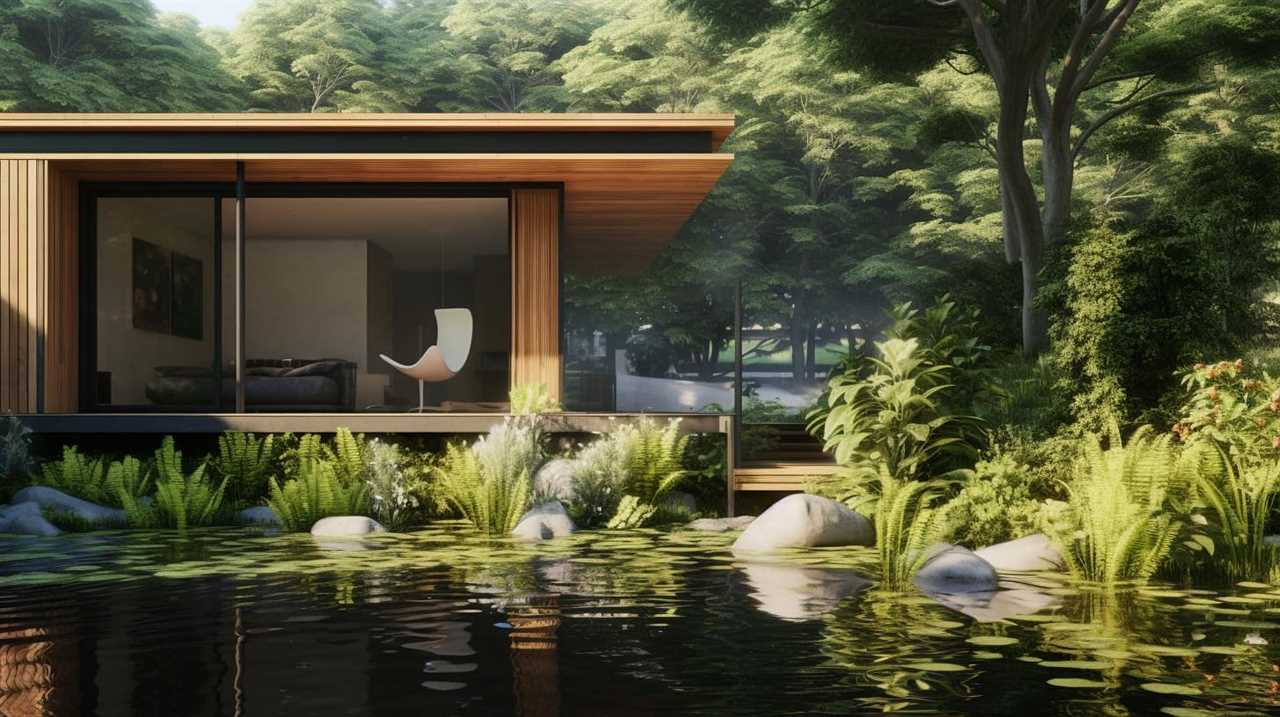
Stay vigilant and maintain cleanliness to ensure a ant-free environment.
I’m Theodore, and I love tiny houses. In fact, I’m the author of Tiny House 43, a book about tiny houses that are also tree houses. I think they’re magical places where imaginations can run wild and adventures are just waiting to happen.
While tree houses are often associated with childhood, they can be the perfect adult retreat. They offer a cozy space to relax and unwind, surrounded by nature. And since they’re typically built on stilts or raised platforms, they offer stunning views that traditional homes simply can’t match.
If you’re looking for a unique and romantic getaway, a tree house tiny house might just be the perfect option.
Beginners Guides
How Cheap Can You Build a Tiny House

Constructing a small house is akin to figuring out a puzzle – it can be difficult, but the payoff is valuable. As someone who enjoys discovering inventive answers, I sympathize with the longing to create a gorgeous home without breaking the bank.
In this article, we’ll explore the factors that affect the cost of building a tiny house and discover budget-friendly materials and labor-saving strategies. Join me on this journey to uncover just how cheap you can build your dream tiny house.
Key Takeaways
- Choosing the right location in a rural area with lower land prices and fewer building restrictions can significantly affect the cost of building a tiny house.
- Using alternative building methods such as reclaimed materials or repurposed items can help reduce costs.
- Implementing cost-saving techniques and building on a budget are important factors in building a cheap tiny house.
- Utilizing budget-friendly building materials, such as affordable insulation options and low-cost flooring alternatives, can also contribute to building a cheap tiny house.
Factors Affecting the Cost of Building a Tiny House
What are the factors that affect the cost of building a tiny house?
When it comes to building a tiny house on a budget, there are several cost-saving techniques and alternative building methods that can significantly impact the overall cost.

One of the main cost-saving techniques is choosing the right location. Building in a rural area with lower land prices and fewer building restrictions can help keep costs down.
Another factor that affects the cost is the size and design of the tiny house. The simpler the design, the more cost-effective it will be.
Additionally, using alternative building methods such as reclaimed materials or repurposed items can also help reduce costs.
By considering these factors and implementing cost-saving techniques, it’s possible to build a tiny house on a budget.
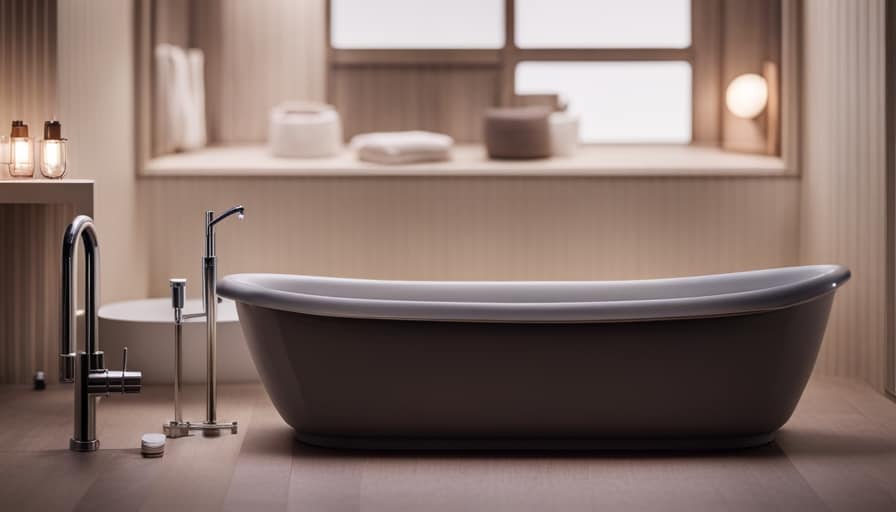
Transitioning into the subsequent section about budget-friendly tiny house building materials, let’s explore how the choice of materials can further impact the overall cost.
Budget-Friendly Tiny House Building Materials
When it comes to building a tiny house on a budget, I can find affordable building materials that will help keep costs down. One area where I can save money is by choosing affordable insulation options. Instead of expensive spray foam insulation, I can opt for alternatives such as fiberglass batts or rigid foam boards. These options are cost-effective and still provide good insulation for the tiny house. Additionally, I can consider low-cost flooring alternatives to save money. Instead of hardwood or tile, I can use vinyl plank flooring or laminate flooring, which are both affordable and durable. By making smart choices when it comes to insulation and flooring, I can build a budget-friendly tiny house without compromising on quality.
| Affordable Insulation Options | Low Cost Flooring Alternatives |
|---|---|
| Fiberglass batts | Vinyl plank flooring |
| Rigid foam boards | Laminate flooring |
Strategies for Saving Money on Tiny House Design
To save money on my tiny house design, I can employ cost-saving strategies such as utilizing multipurpose furniture and maximizing storage space. By incorporating cost-effective design options and implementing DIY tiny house building techniques, I can create a functional and affordable living space.
One key strategy is to choose furniture that serves multiple purposes, such as a sofa that can be converted into a bed or a dining table that can be folded away when not in use. This not only saves money on buying separate pieces of furniture but also maximizes the use of limited space.
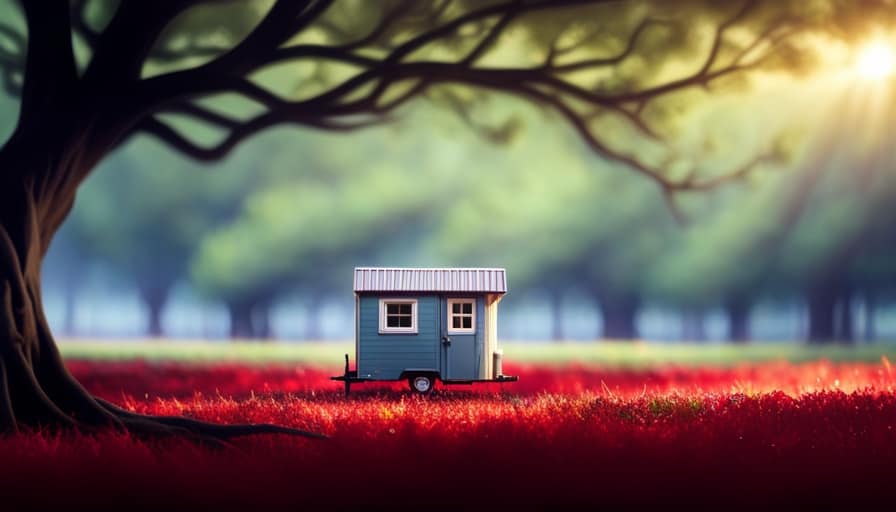
Another cost-saving strategy is to maximize storage space by utilizing built-in shelving, under-bed storage, and wall-mounted organizers. This eliminates the need for additional storage furniture and keeps the space clutter-free.
Creative Ways to Reduce Labor Costs in Tiny House Construction
I can significantly reduce labor costs in tiny house construction by hiring a small team of skilled workers instead of a large crew. This approach allows for effective coordination and streamlined communication, resulting in increased efficiency and reduced labor hours.
Here are some creative ways to further reduce labor costs in tiny house construction:
-
Utilize DIY construction techniques: Encourage the use of DIY construction techniques, where homeowners can actively participate in the building process. This not only reduces labor costs but also creates a sense of ownership and satisfaction.
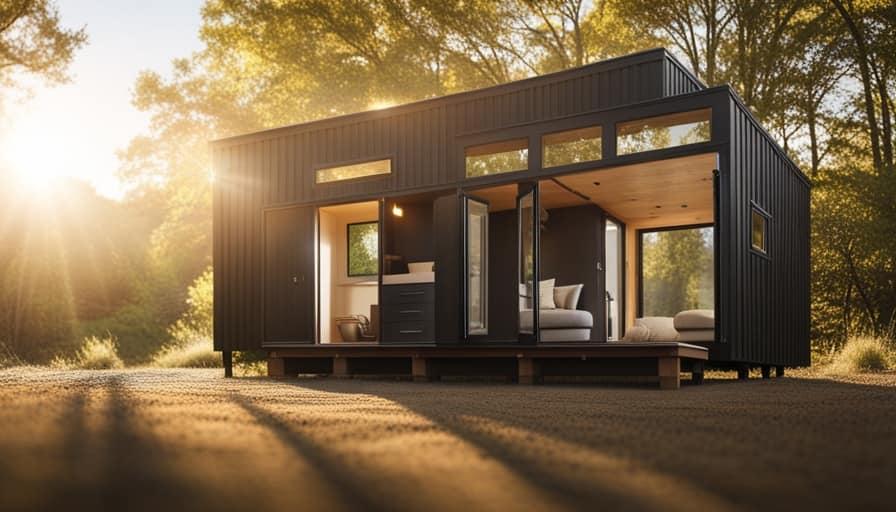
-
Incorporate alternative energy sources: Explore the use of alternative energy sources such as solar panels or wind turbines. By integrating these systems during the construction phase, you can avoid additional labor costs associated with retrofitting.
-
Optimize material usage: Carefully plan and optimize the use of materials to minimize waste. This can be achieved by accurately measuring and cutting materials, as well as repurposing leftover materials for other parts of the project.
-
Prioritize efficient design: Focus on designing a space that maximizes functionality and minimizes unnecessary labor-intensive features. This includes thoughtful space planning, utilizing multipurpose furniture, and incorporating efficient storage solutions.
Implementing these strategies won’t only help reduce labor costs but also contribute to a sustainable and budget-friendly tiny house construction process.
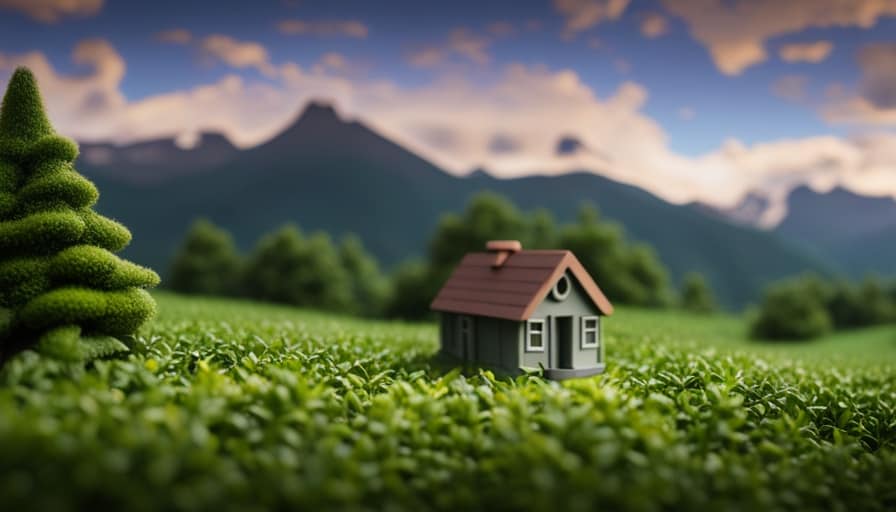
Tips for Finding Affordable Land for Your Tiny House
By researching online listings and networking with local real estate agents, I can easily find affordable land for my tiny house. It is important to explore alternative financing options for purchasing land for a tiny house to keep costs low. One option is owner financing, where the seller acts as the lender and allows you to make monthly payments instead of obtaining a traditional mortgage. Another option is crowdfunding, where you can raise funds from a community of supporters who believe in your tiny house project. Additionally, negotiating with local municipalities for reduced fees and regulations for tiny house living can save you money in the long run. Some municipalities may be open to creating special zoning or permitting regulations for tiny houses, making it easier and more affordable to live in them.
| Financing Options | Benefits |
|---|---|
| Owner Financing | Lower interest rates, flexible payment terms |
| Crowdfunding | Community support, no need for traditional loans |
| Negotiating with Local Municipalities | Reduced fees, simplified regulations |
Finding affordable land for your tiny house is a crucial step in building your dream home while staying within your budget. With the right research, networking, and negotiation skills, you can make your tiny house dreams a reality.
Frequently Asked Questions
What Are the Most Common Mistakes to Avoid When Building a Tiny House on a Tight Budget?
Common pitfalls to avoid when building a tiny house on a tight budget include overestimating DIY skills, not researching local codes and regulations, and not budgeting for unexpected expenses. Cost saving tips include using reclaimed materials and prioritizing essential features.
Are There Any Financing Options Available for Building a Tiny House?
Financing options for building a tiny house include personal loans, RV loans, and construction loans. Pros include flexibility, ownership, and the opportunity to live mortgage-free. Cons may include higher interest rates and stricter qualification requirements.
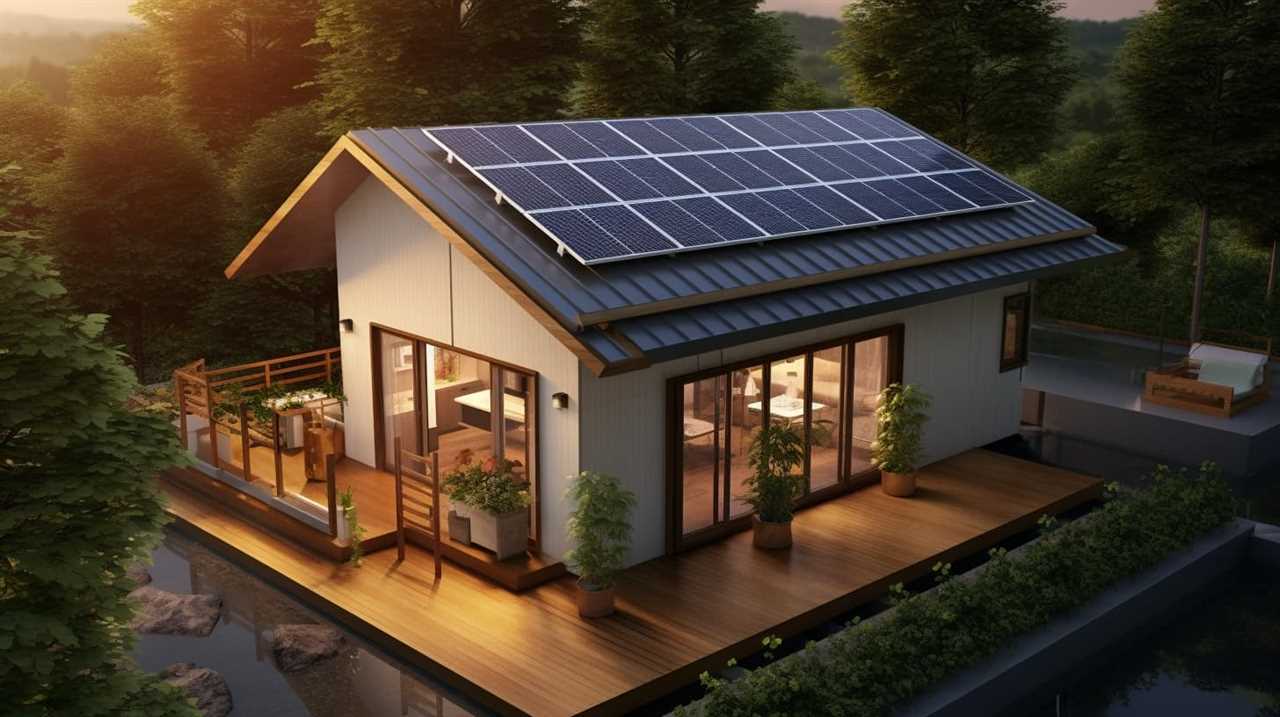
How Much Does It Cost to Maintain a Tiny House on a Yearly Basis?
Maintaining a tiny house on a yearly basis can be cost-effective. By embracing the benefits of living in a tiny house vs. a traditional home and following tips for minimizing maintenance costs, I can save money and enjoy a simpler lifestyle.
Can You Build a Tiny House Using Recycled or Salvaged Materials?
Using recycled and salvaged materials for a tiny house not only saves money, but also gives a sense of purpose and accomplishment. It’s a creative way to build sustainably and reduce waste while creating a unique and personalized home.
Are There Any Legal Restrictions or Regulations to Consider When Finding Land for a Tiny House?
When finding land for a tiny house, it’s important to consider legal restrictions and zoning regulations. Land requirements vary, and financing options may be limited. Maintenance costs can be lower, and eco-friendly building materials are often used.
Conclusion
In conclusion, building a tiny house can be an affordable and cost-effective option for those looking to downsize or live a more minimalist lifestyle. By considering factors such as materials, design strategies, and labor costs, it’s possible to build a tiny house on a tight budget.

With a little creativity and resourcefulness, you can achieve your dream of owning a tiny house without breaking the bank. So why wait? Start planning and building your own tiny house today!
I’m Theodore, and I love tiny houses. In fact, I’m the author of Tiny House 43, a book about tiny houses that are also tree houses. I think they’re magical places where imaginations can run wild and adventures are just waiting to happen.
While tree houses are often associated with childhood, they can be the perfect adult retreat. They offer a cozy space to relax and unwind, surrounded by nature. And since they’re typically built on stilts or raised platforms, they offer stunning views that traditional homes simply can’t match.
If you’re looking for a unique and romantic getaway, a tree house tiny house might just be the perfect option.
-

 Beginners Guides2 weeks ago
Beginners Guides2 weeks agoHow To Buy A Tesla Tiny House
-

 Energy Efficiency2 months ago
Energy Efficiency2 months agoBest Tiny Homes For Cold Climates
-

 Beginners Guides2 weeks ago
Beginners Guides2 weeks agoTiny House Nation Where Are They Now Stephanie
-

 Tiny House Resources (e.g., legalities, cost, insurance, FAQs)2 months ago
Tiny House Resources (e.g., legalities, cost, insurance, FAQs)2 months agoDo Tiny Homes Need Planning Permission?
-

 Beginners Guides3 weeks ago
Beginners Guides3 weeks agoFrom The Show Tiny House Nation How Many Keep Their Tiny House?
-

 Beginners Guides2 months ago
Beginners Guides2 months agoUsing a Climbing Net For Treehouse Construction
-

 Beginners Guides2 months ago
Beginners Guides2 months agoHow to Build a Treehouse Without Drilling Into the Tree
-

 Beginners Guides4 weeks ago
Beginners Guides4 weeks agoTiny House Nation Who Pays For The Houses




